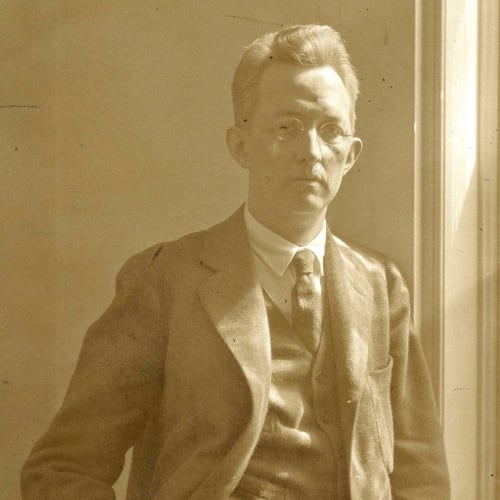Charles Sheeler American, 1883-1965
Native of Philadelphia, Charles Sheeler was a founder, along with Charles Demuth, of the super-real mechano-modernism that came to be known as Precisionism. Sheeler studied at the Pennsylvania Academy of Fine Arts with William Merritt Chase. The enduring influence of his interest in the private lives of machines came from his friend, fellow Pennsylvania painter Morton Schamberg. Schamberg died tragically early in a meteoric career in 1918, but his fascination with the cult of the machine would infect Sheeler’s work for decades to come. This interest was a heraldic view of industry, which won the painter commissions to document factories and hydroelectric dams, but also in the industrialized manner of production of the artwork. To this end, his subjects included mass-produced consumer goods–intimate expressions of global industry–and his process embraced mechanical media to express a modern vision. 1921’s Manhatta was an experimental film in collaboration with the young photographer Paul Strand, yet an outlier in both their careers, it remains undeniably one of the purest expressions of the terms of the new movement. Sheeler also used photography, both as a process tool and as a medium of expression in its own right. His work on canvas, while varied across his long career, conformed to his mastery of traditional methods along with the mechanical clarity of photography.
-

Now Modern
May 9 - June 10, 2022Read more -

The Immaculates
Paintings, Photographs and Prints December 2 - 18, 2020The Immaculates: Paintings, Photographs and Prints presents the broad scope of the Precisionist aesthetic by exploring the stylistic concerns and iconography that held it together. Alfred H. Barr, Jr., founding...Read more



